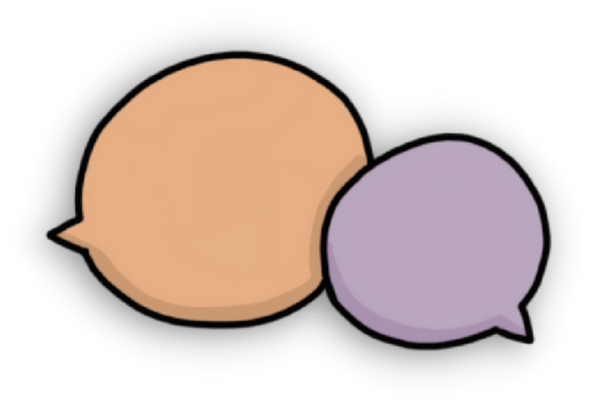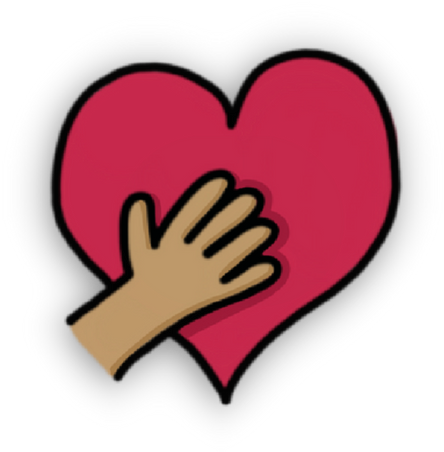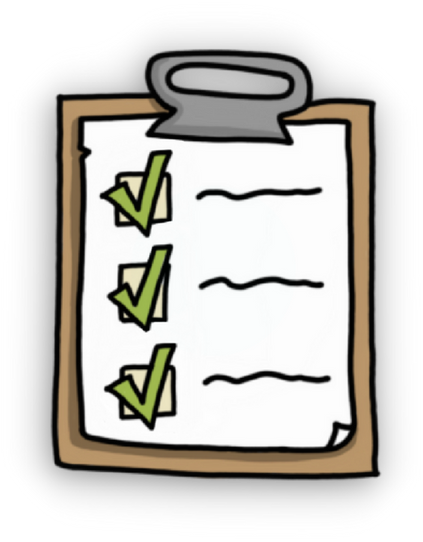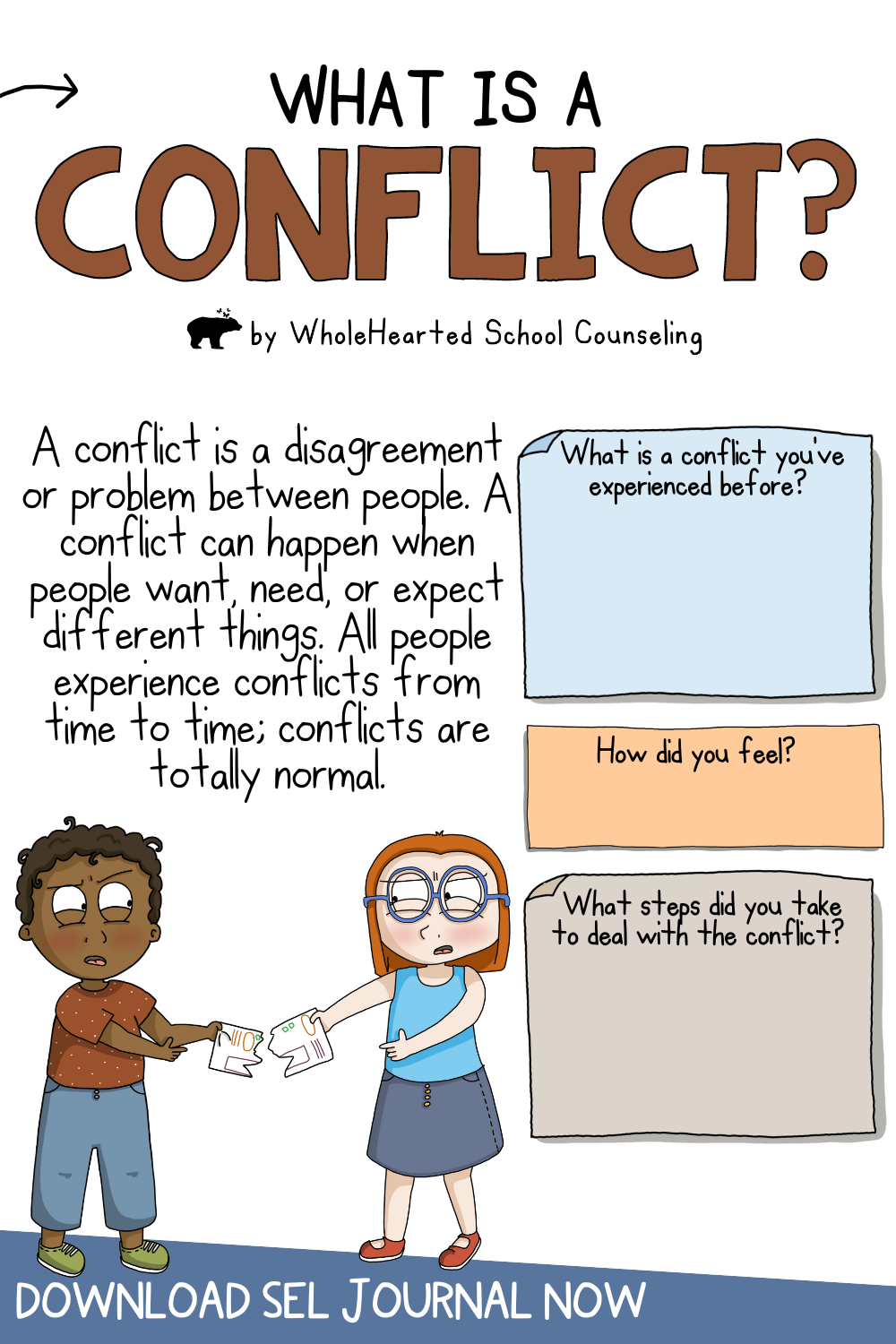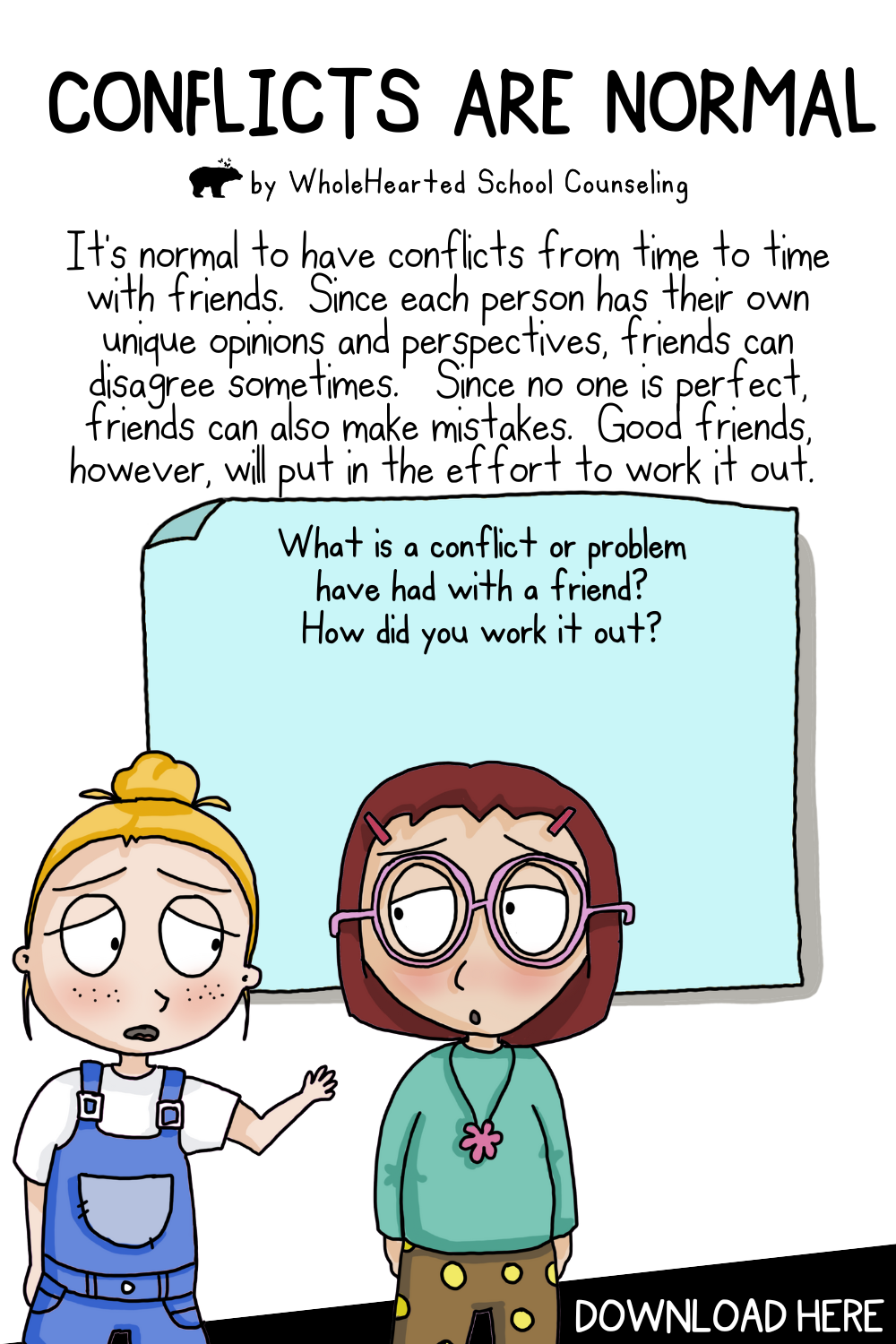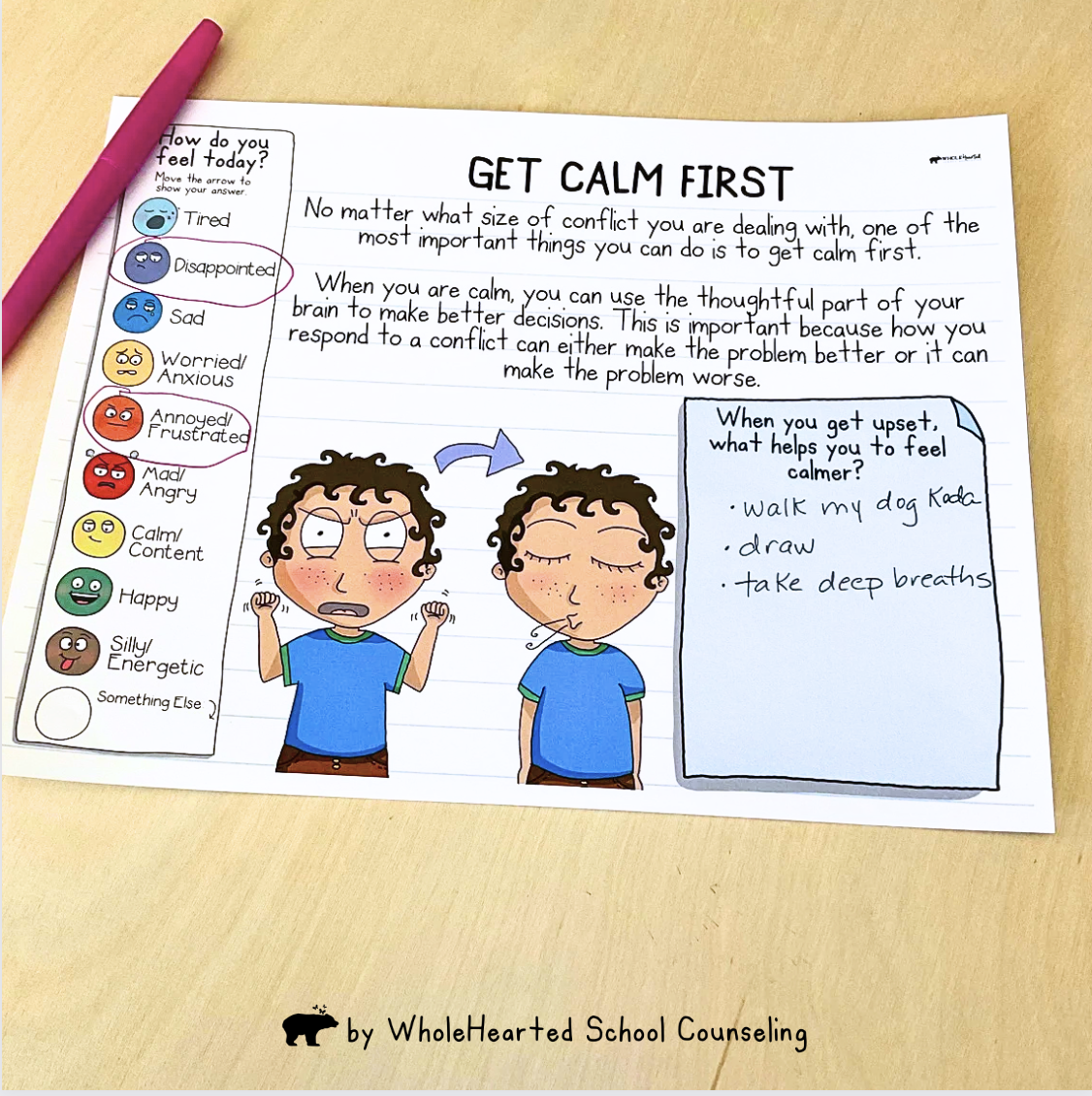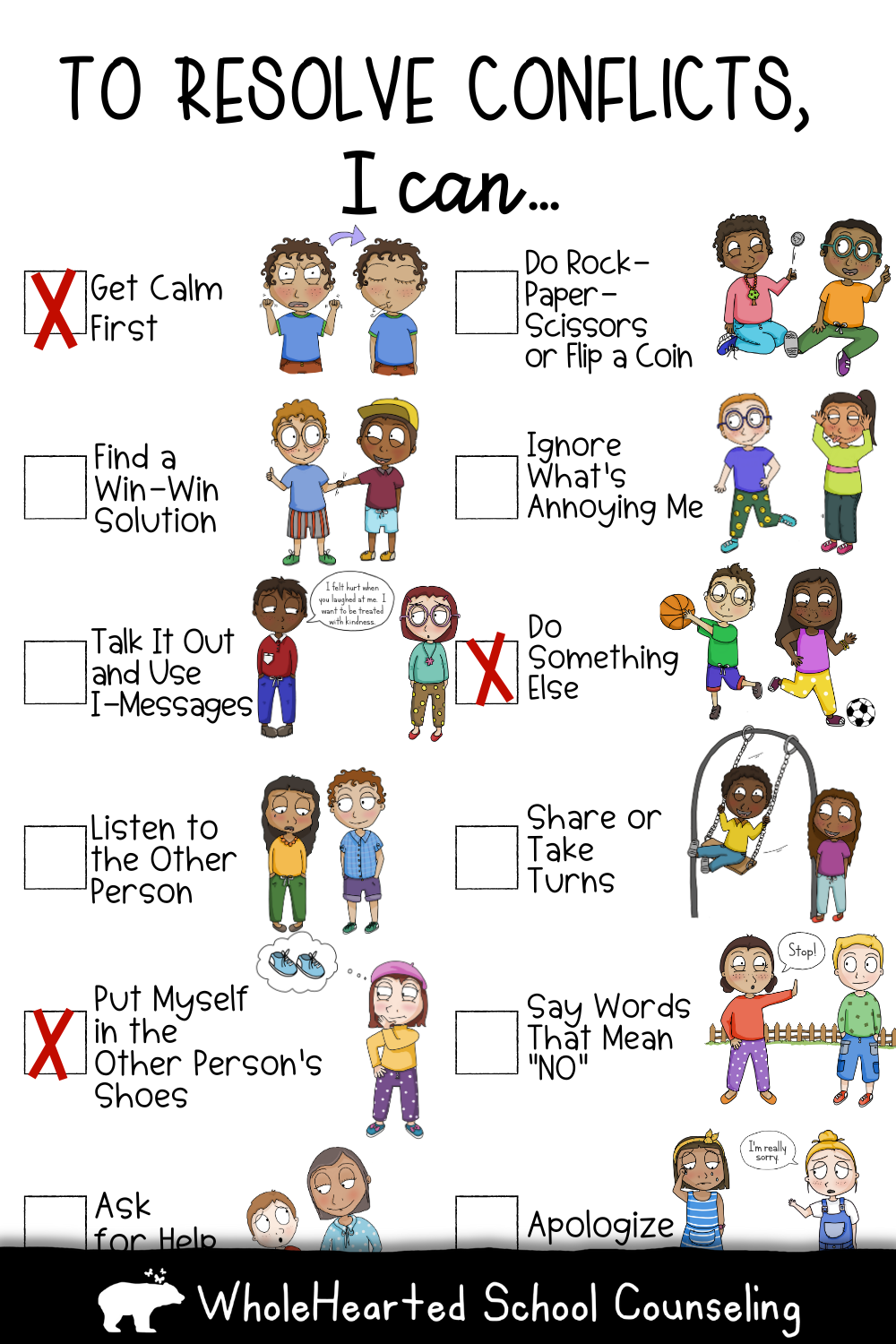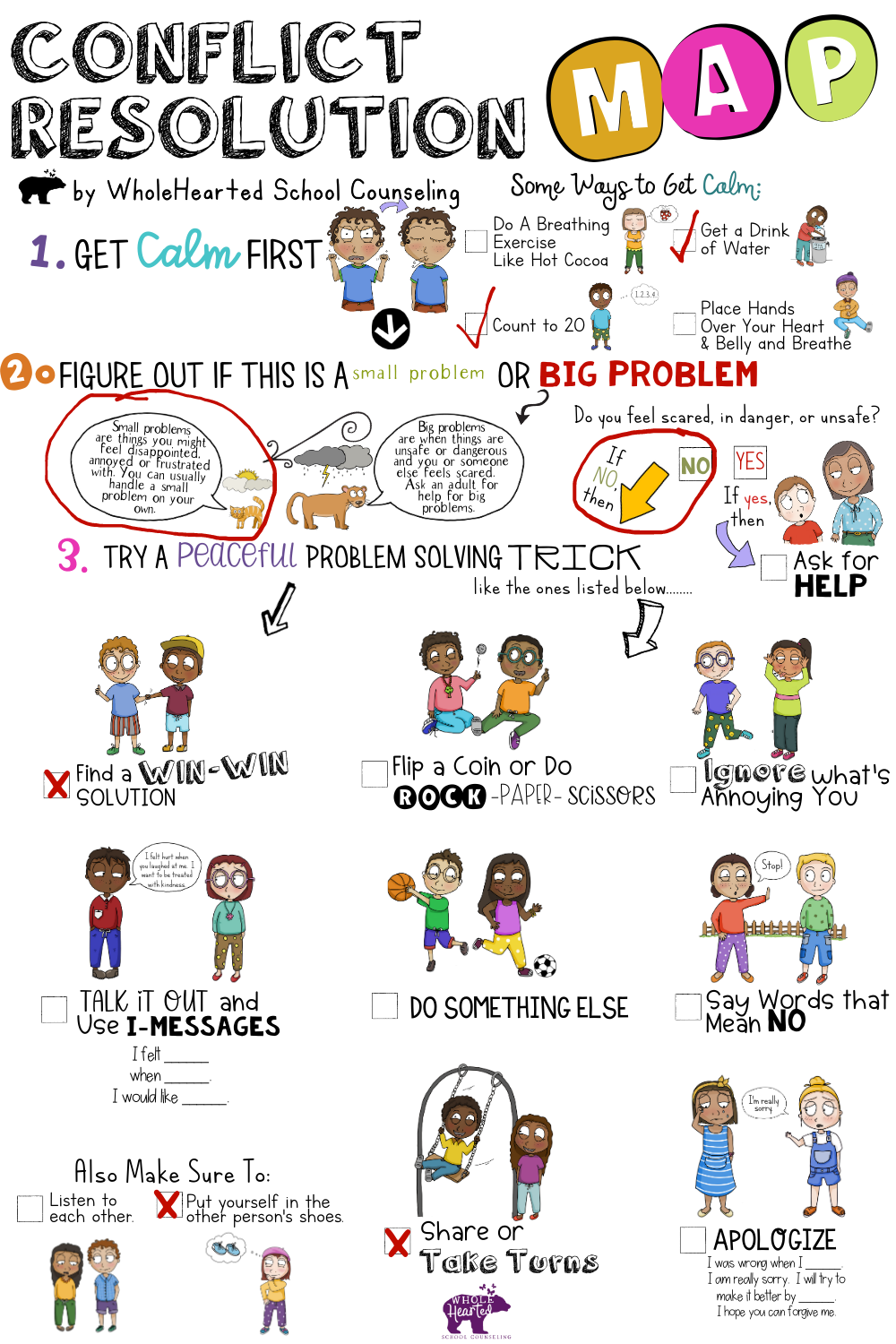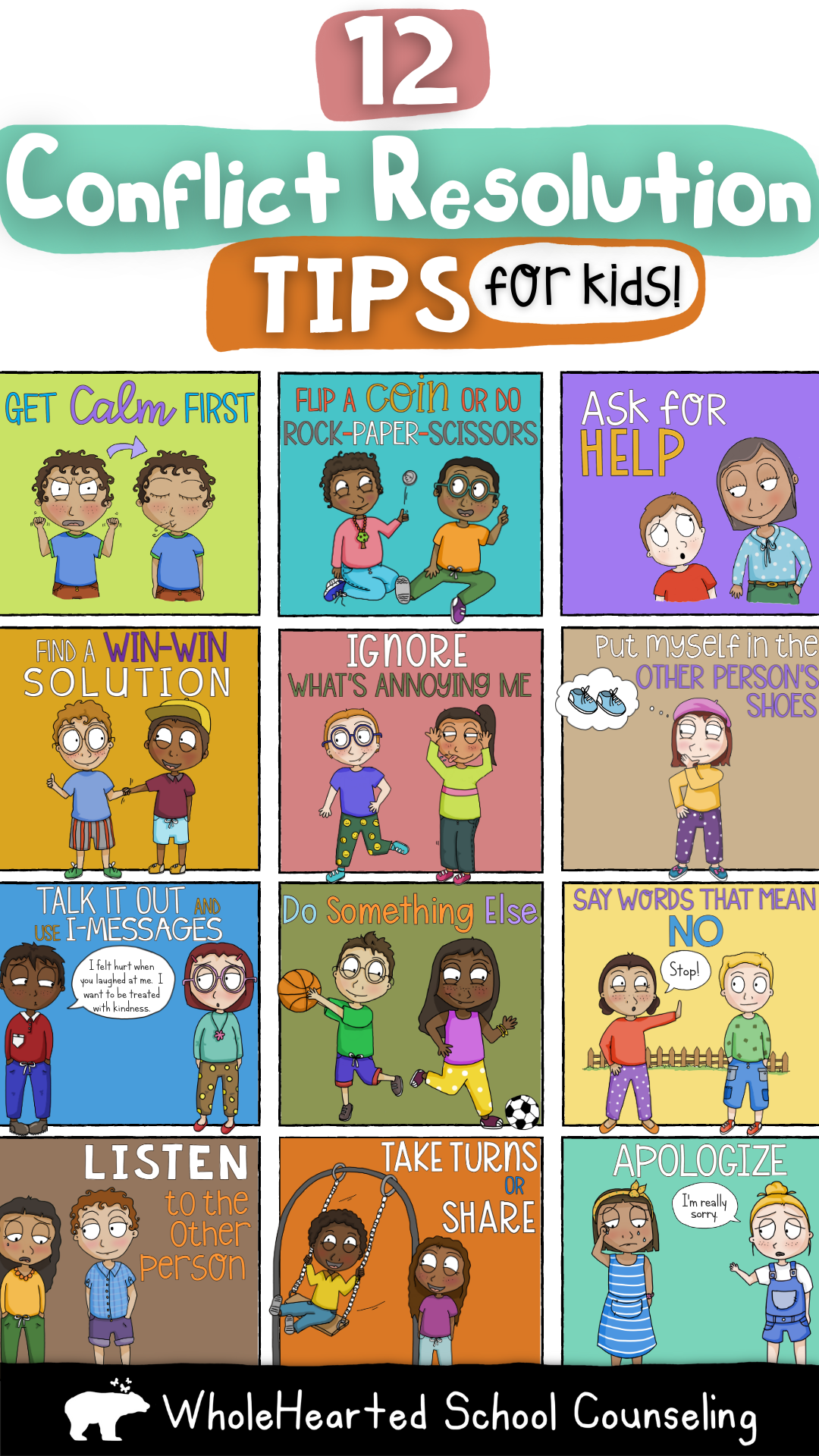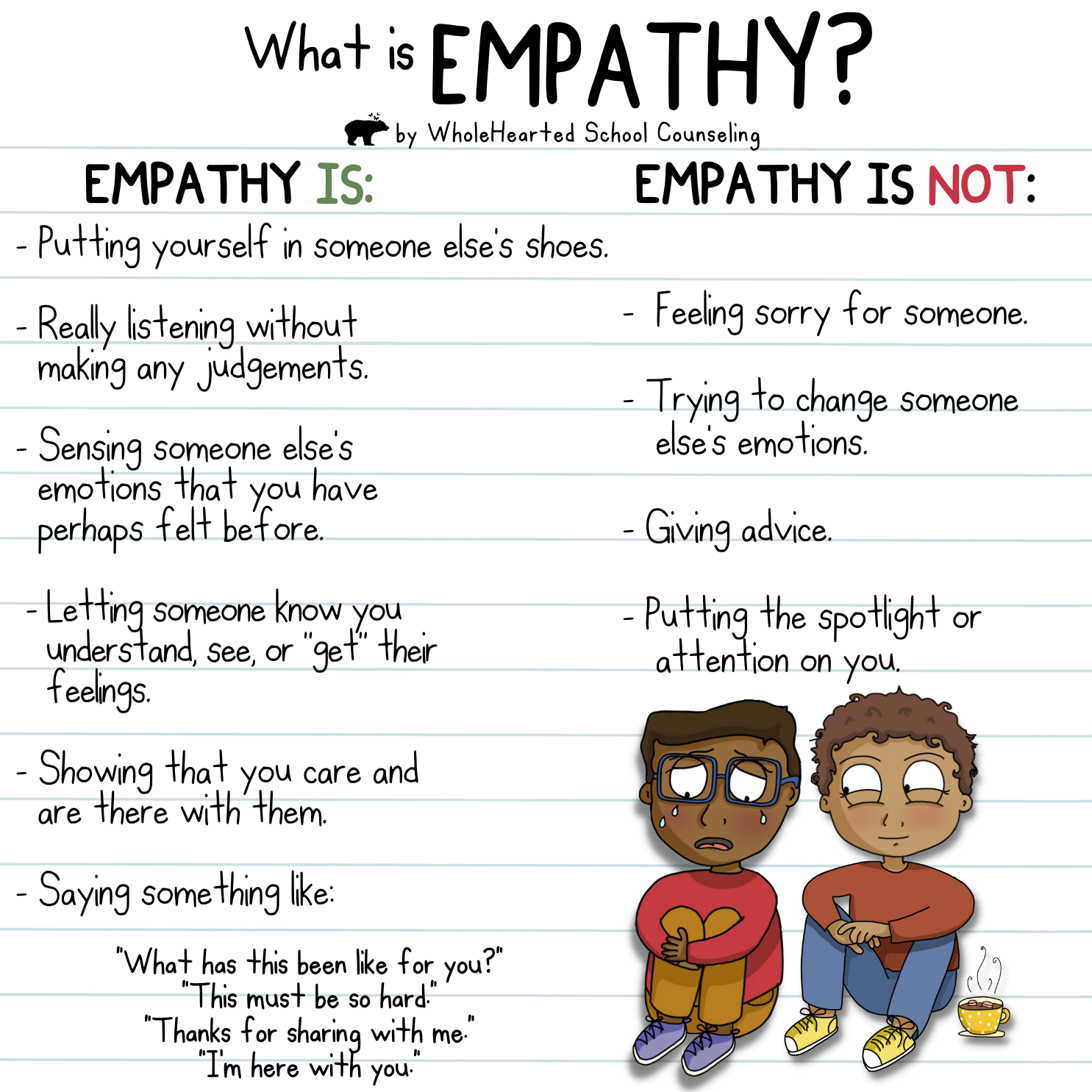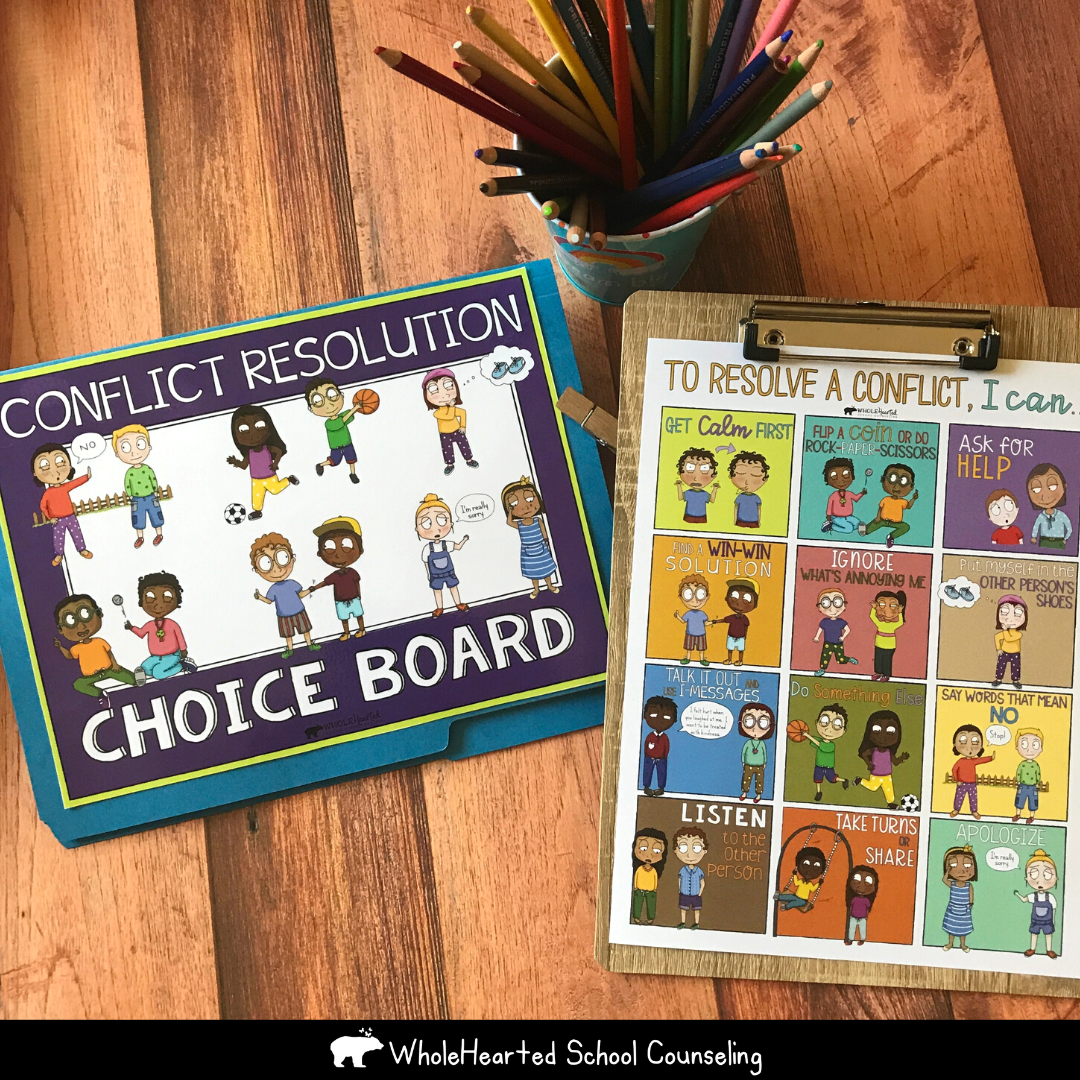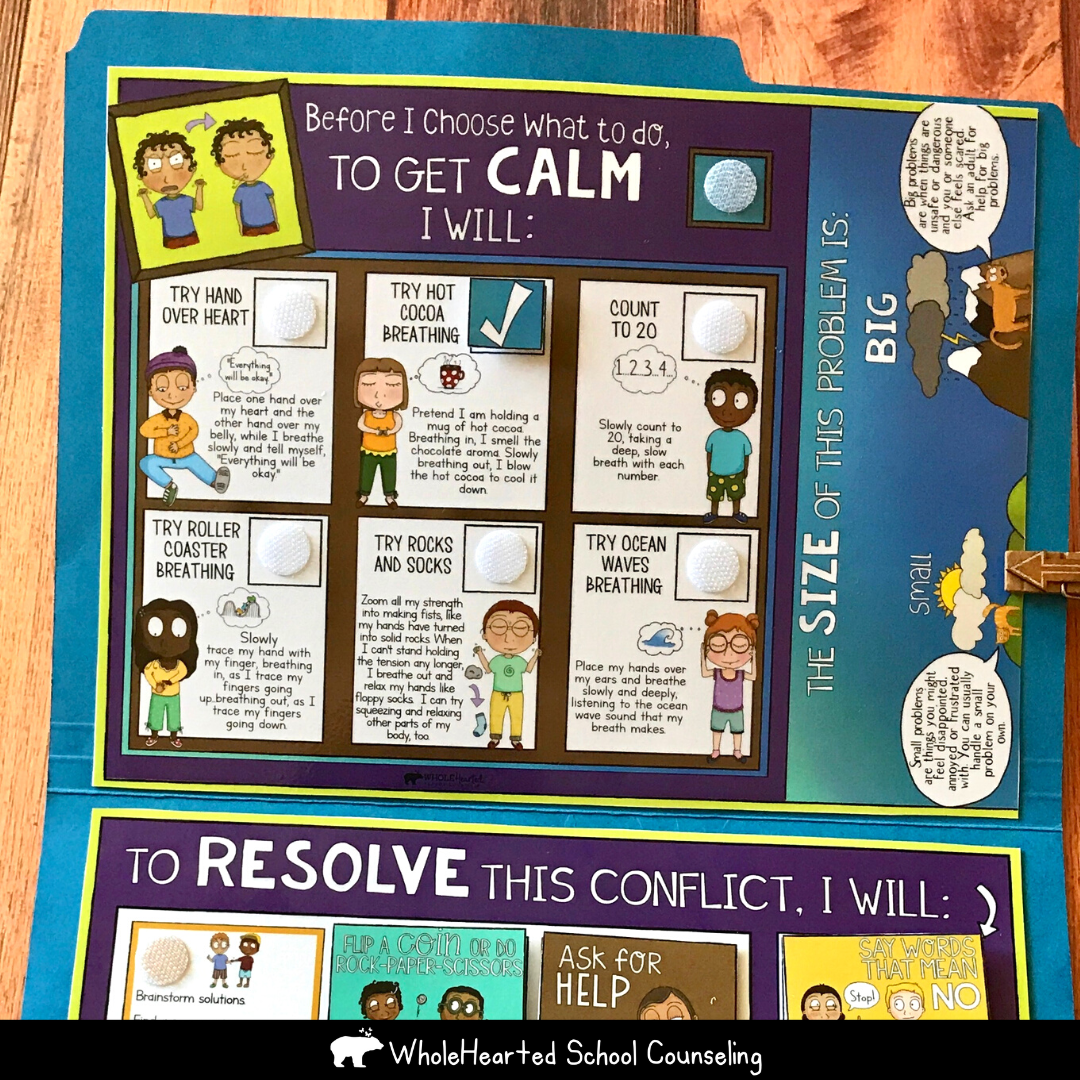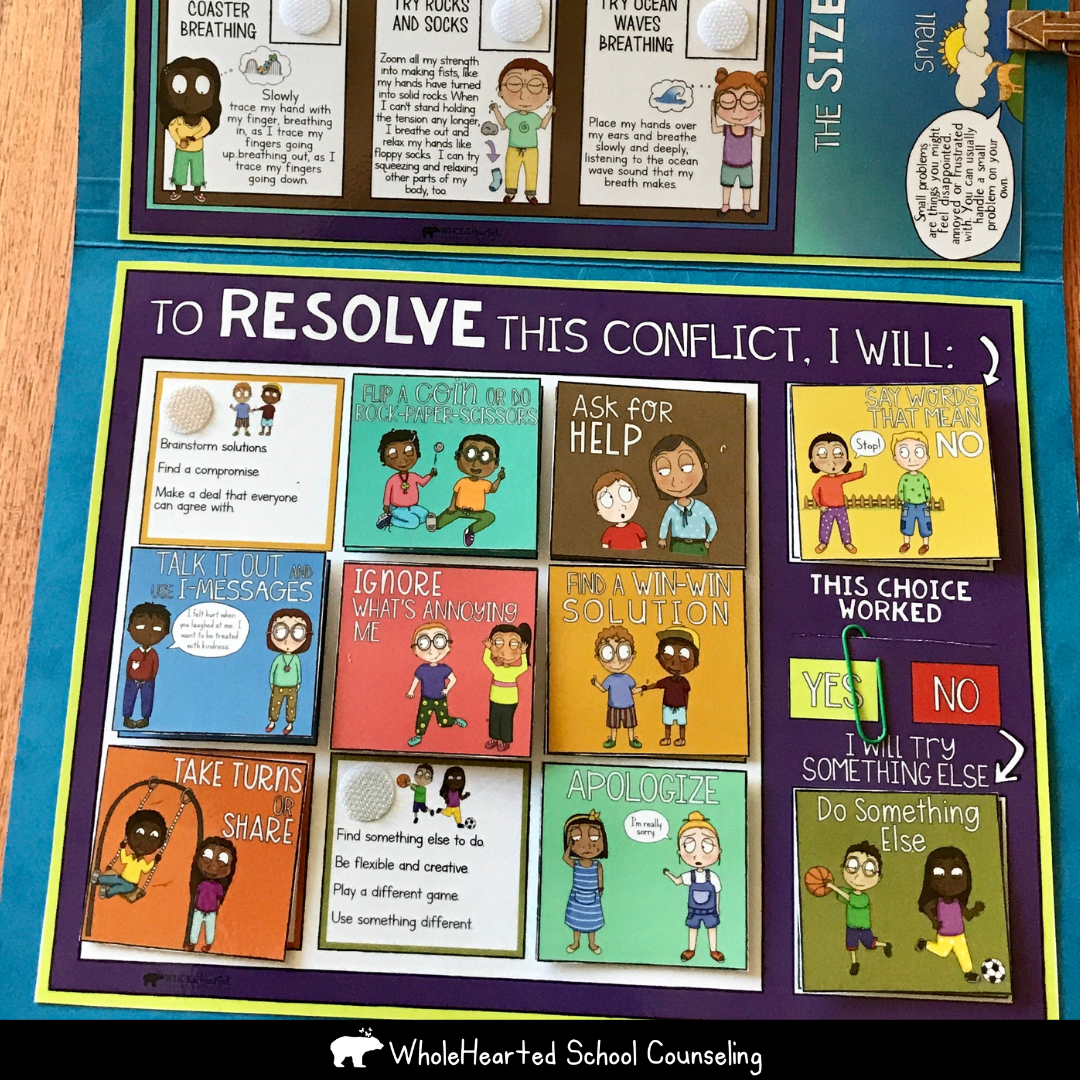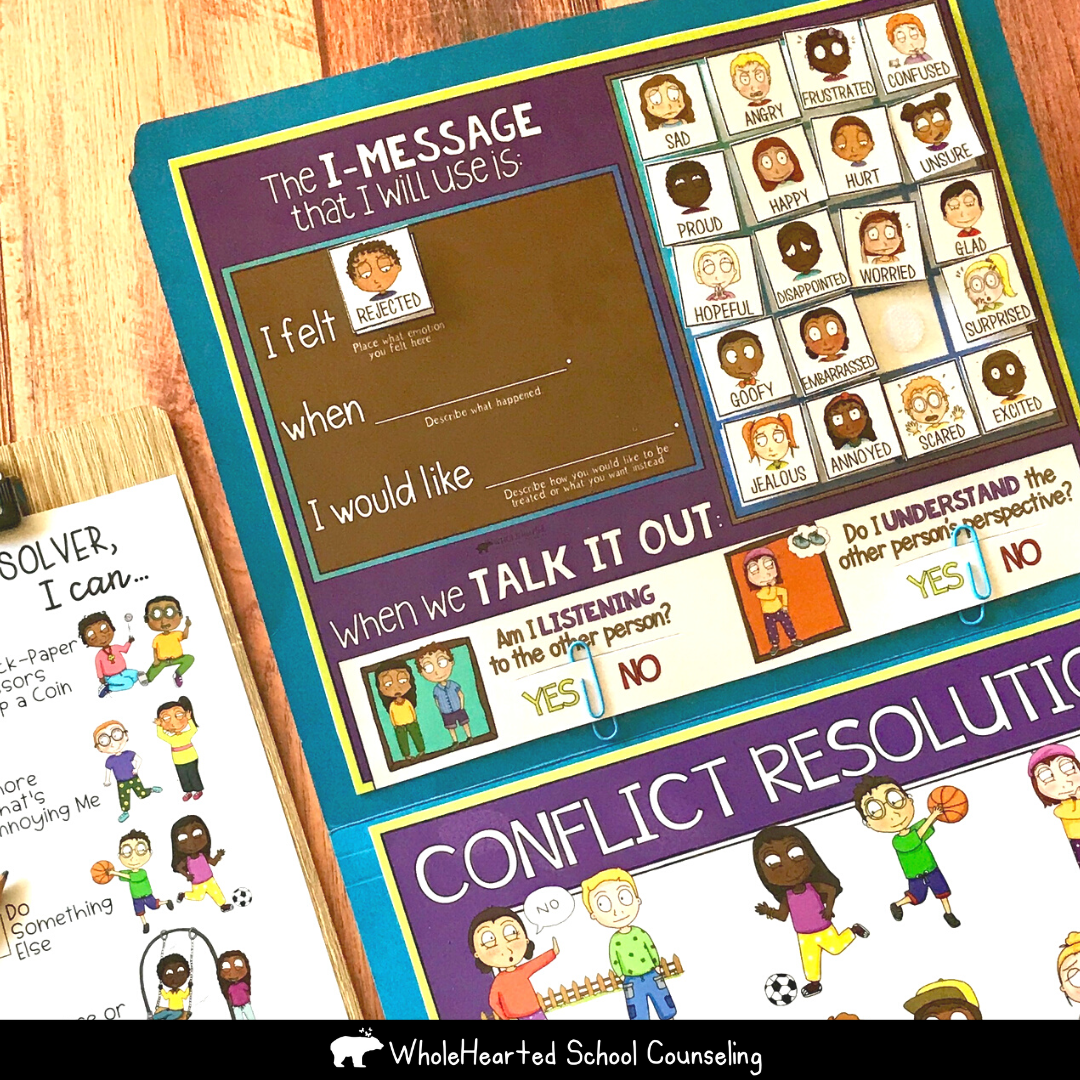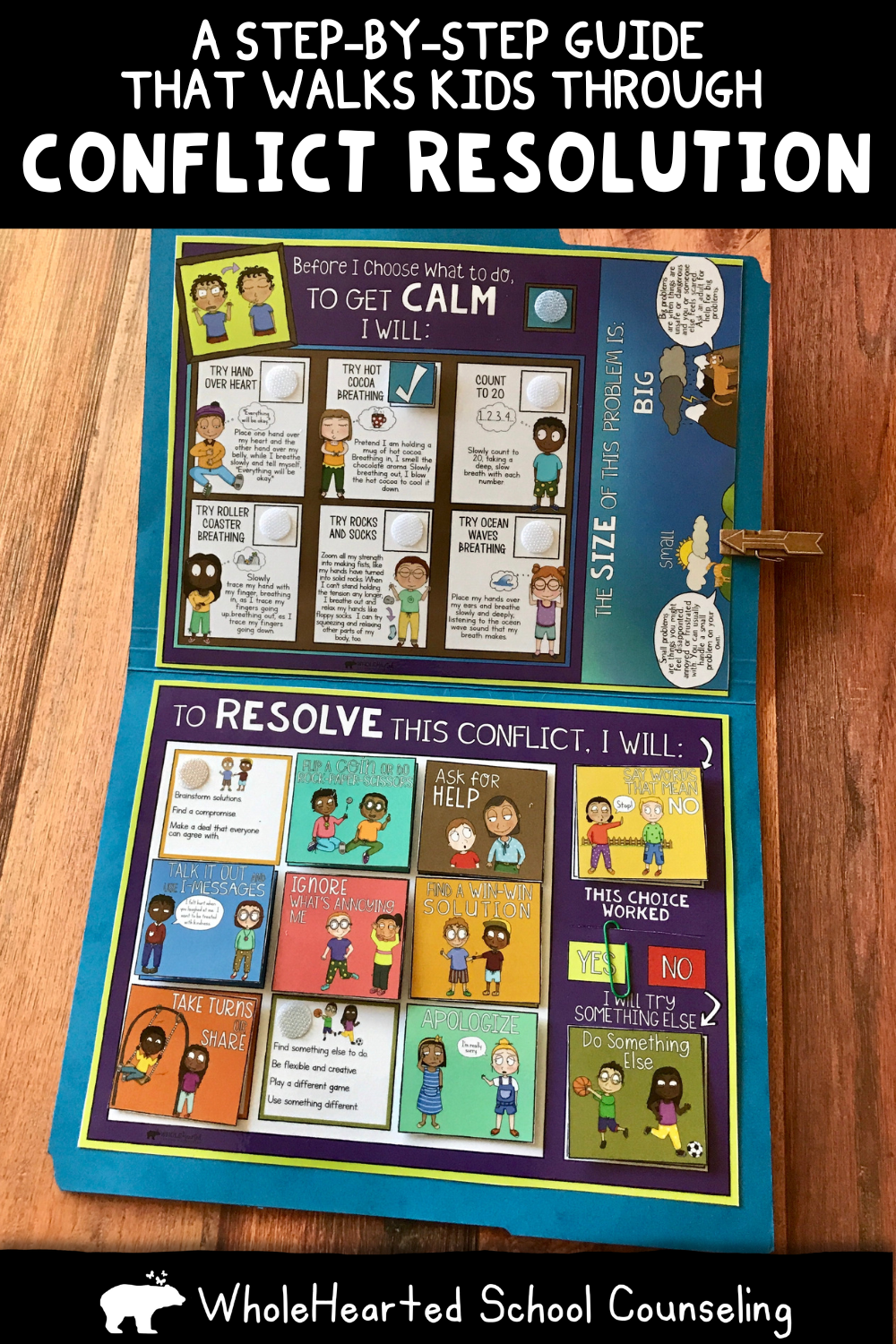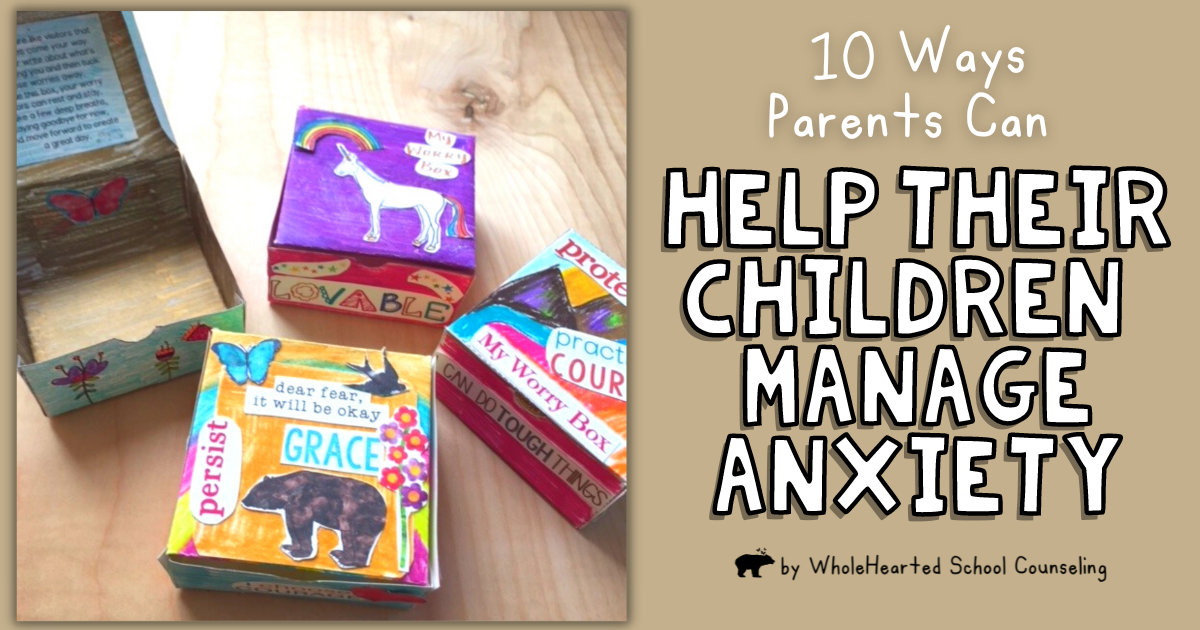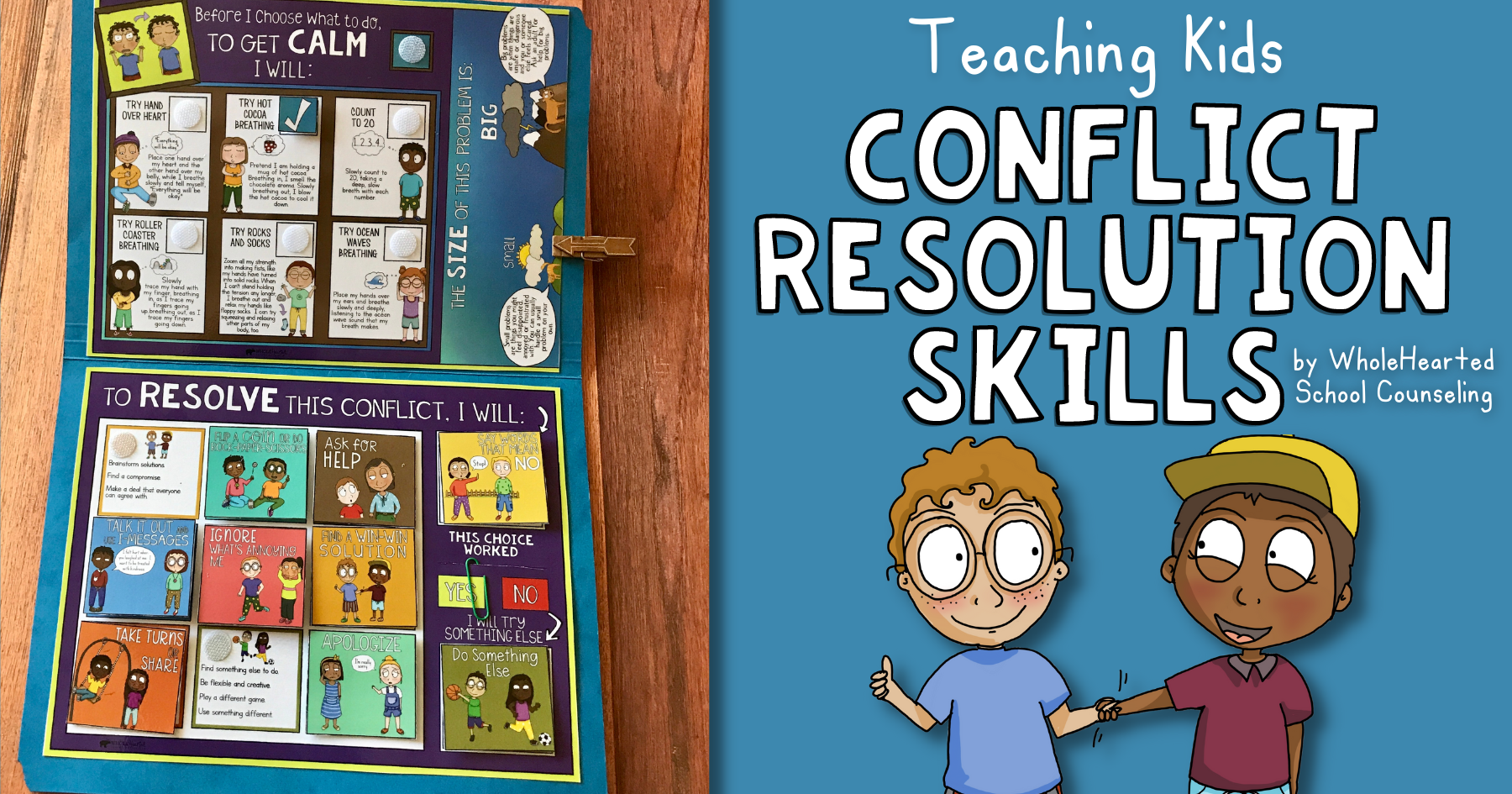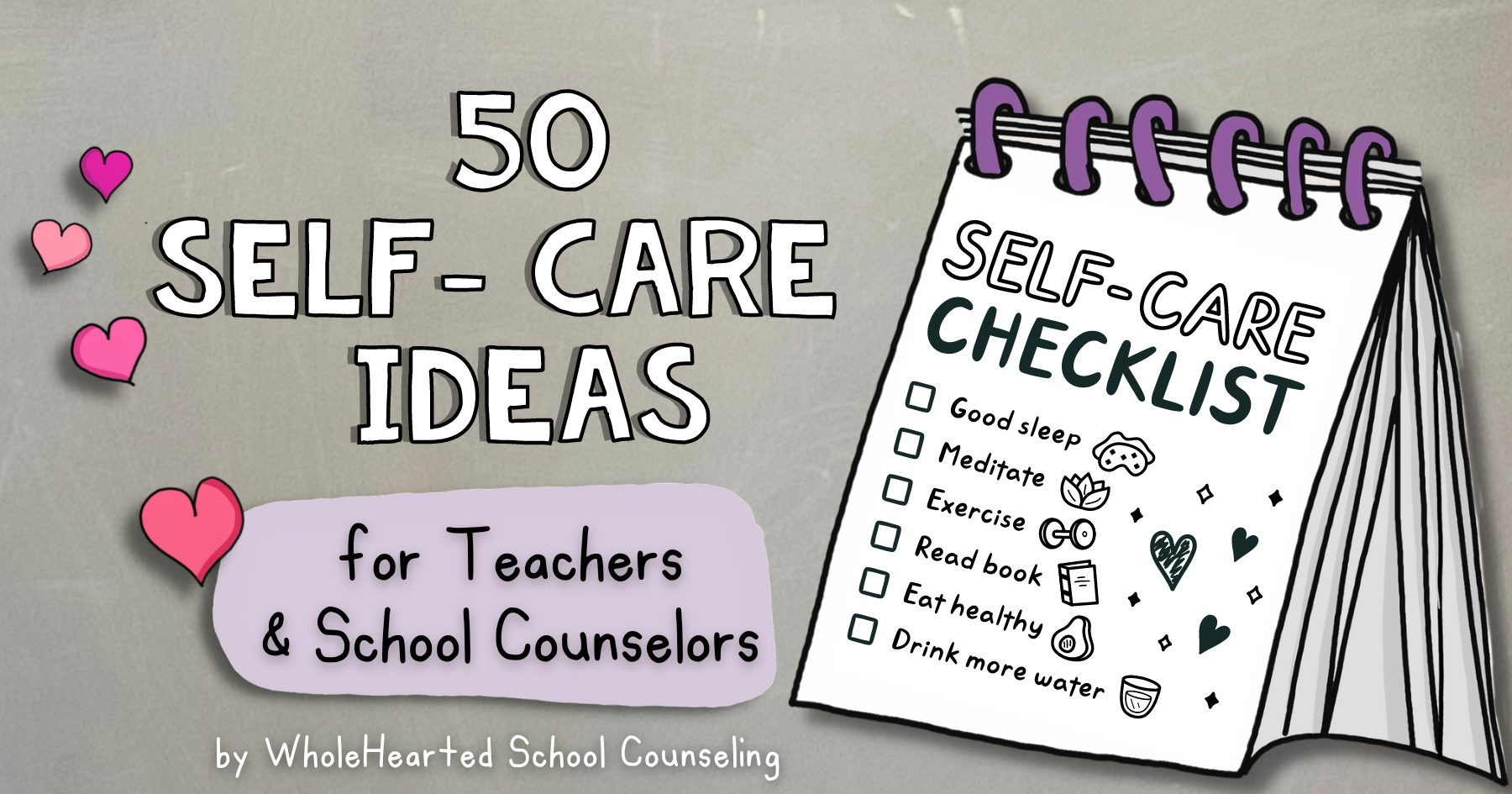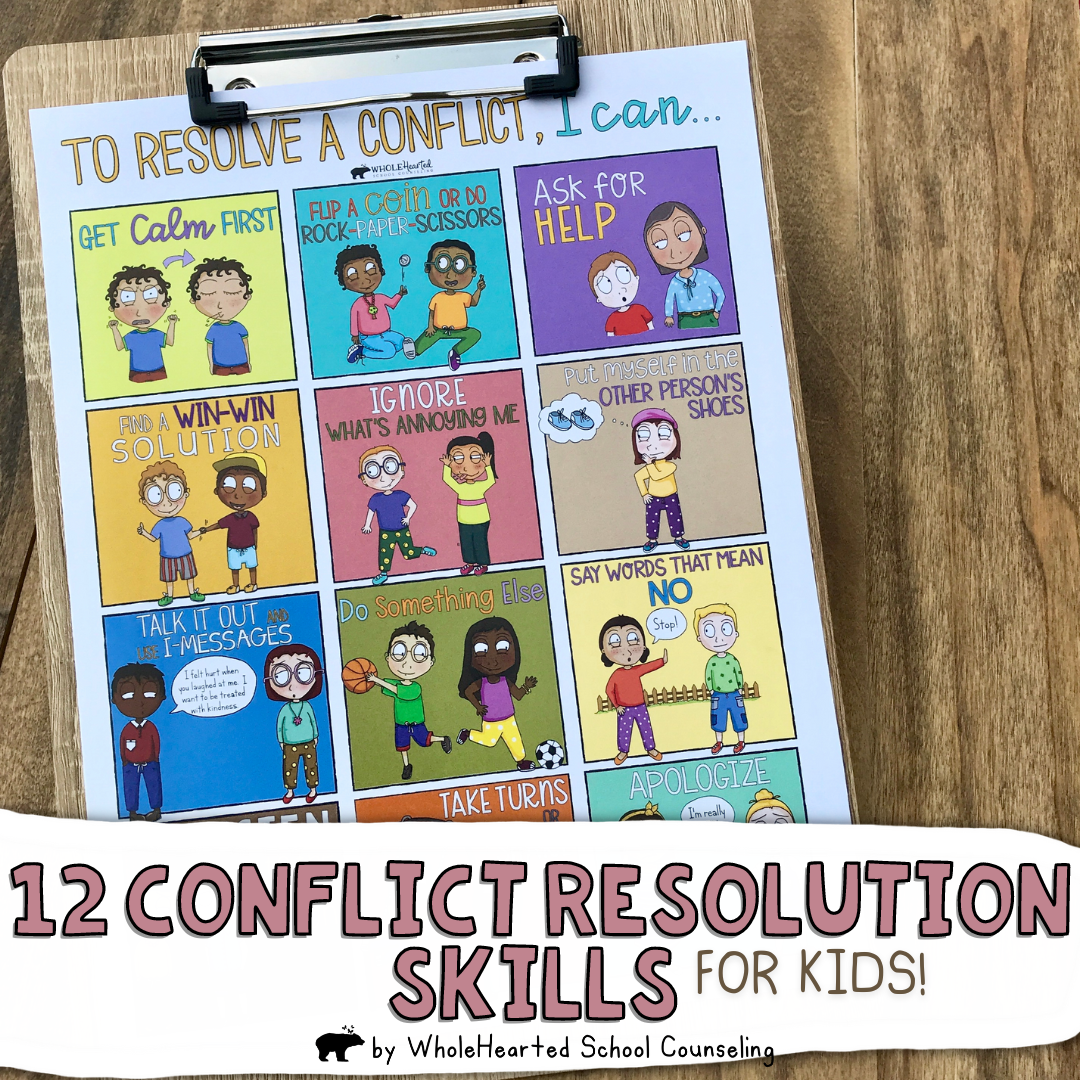
WHY WE NEED TO TEACH KIDS CONFLICT RESOLUTION SKILLS
As a mom of two and a former school counselor, I can’t stress enough how important it is to teach kids about healthy conflict resolution skills. I mean if you’re a parent or are someone who works with children on a daily basis, then I’m preaching to the choir, right? We all know the hard truth that conflict is inevitable. It’s part of living. And since there’s no way around it, knowing how to handle conflict in healthy and respectful ways is a critical life skill that will serve our kids well into adulthood.
Now some will argue that kids will figure it out on their own. And the part of me that sees the not-so-great-things that happen with helicopter parenting, agrees that there is no doubt some truth to that.
At the same time, as someone who has seen my fair share of playground scuffles and classroom drama, I do believe that without guidance, kids are more likely to resort to name-calling, hitting, or other aggressive behaviors when they’re angry, hurt, or frustrated.
So, what can we do as parents, teachers, and school counselors? We can teach our kids how to handle conflict in a way that’s respectful, assertive, and productive.
Here are a few reasons why this is so important:
Prevention of Small Issues Escalating
First of all, healthy conflict resolution skills can prevent small issues from turning into bigger ones. Let’s say your child feels frustrated with a friend who keeps interrupting her while she’s trying to talk. Without the skills to address the issue in a respectful way, your child might start avoiding the friend. Or worse, she might lash out with hurtful comments. On the other hand, if your child knows how to assertively communicate her needs and boundaries by using I-Statements, for instance, she can address the issue head-on. And this means there’s a good change it would prevent the conflict from escalating.
Strengthens Relationships
Secondly, healthy conflict resolution skills helps kids to build stronger relationships. When conflicts arise, kids get to practice empathy, active listening, and problem-solving. When working through conflicts in healthy and respectful ways, kids can develop deeper connections and a stronger sense of trust.
Boosts Self-Efficacy and Self-Esteem
Finally, healthy conflict resolution skills can help kids build self-confidence and self-esteem. When kids feel empowered to handle conflicts in a productive way, they’re more likely to speak up for themselves in an assertive way, advocate for their needs, and set boundaries. These skills can help children feel more in control of their lives, by focusing on what is within their control as compared to outside of it. This leads to children feeling more confident in their ability to handle whatever difficult situations that come their way.
12 Conflict Resolution Skills to Teach Are….
And since I’m all about tools and action, here’s a list of 12 essential conflict resolution skills every kid (teens and adults, too!) should know.
1. Get Calm First
Teaching kids to get calm before dealing with a conflict is essential. That’s because, when emotions are running high, and the protective part of their brain is sounding the alarm, it’s pretty difficult to communicate effectively and make thoughtful decisions. When you take some time to calm down, you can better regulate your emotions, think clearly, and approach the conflict with a more level-headed state of mind.
Some of the calming strategies I used to teach my students were breathing exercises like Hot Cocoa Breathing and Roller Coaster Breathing (which some people know as 5 Finger Breathing), counting to twenty and back, walking away and taking a short break before addressing the issue.
2. Find a Win-Win Solution
If you can, encourage your children (or students) to see if you can find a solution that works for everyone involved. That’s what we call a win-win solution!
A win-win solution means that best case scenario, both people get what they want or need. Worst case scenario, both people compromise, and at a minimum, feel at least okay with the outcome.
So how to find a win-win solution? Each person can talk about their feelings, wants, and hopes. And then together, brainstorm solutions. Devise a compromise, if needed. And then make a deal that everyone can agree on.
3. Play a Game of Chance like Rock-Paper-Scissors
Playing a game of chance to resolve a conflict is often a favorite for kiddos. (Play just seems to make everything a bit less serious and a whole lot more better, right?) Basically, whoever wins gets to decide what to do and/or go first.
Some fun games of chance include: Rock-Paper-Scissors, coin toss, dice roll, and odds & evens.
4. Ask for Help
Asking an adult for help can be a valuable tool for resolving conflicts and addressing issues that may feel too big for a child to handle on their own. If a child is dealing with a situation that makes them feel scared, unsafe, or if someone else is being harmed, it is essential to reach out to an adult for assistance.
It’s important to teach children to recognize what constitutes a big problem versus a small problem. For instance, someone rolling her eyes at you is not at the same level as someone threatening to fight you after school. Getting bullied or feeling unsafe requires immediate attention from an adult.
And say the problem is more of a medium or small sized one? It still important to remind children that they don’t have to face challenging situations alone. That you have their back. And can help them come up with solutions and strategies to address the conflict effectively.
Another general rule of thumb is I would suggest that they ask for help and talk with an adult if they have tried 2 or 3 problem solving tricks independently and still feel stuck.
5. Ignore What’s Annoying You
Easier said than done. But with enough practice, ignoring the little silly stuff can actually be quite powerful in the sense that it immediately will deescalate a conflict.
Brainstorm with your children or students different times this strategy would be effective. Add some humor, too! Some ideas:
When your brother is chewing loudly or making weird noises at the dinner table, try to ignore the bizarre sounds and instead focus on your own meal. You could even imagine that he’s just pretending to be a cartoon character while he eats.
If your friend keeps interrupting you while you’re talking, try to take a deep breath and keep going. Imagine that she’s a robot that is so excited to tell you information that she can’t help but blurt out.
If your classmate is tapping his foot, try to tune it out the sound and focus on your work. Imagine that he is practicing for a tap dance performance and try to enjoy the rhythm.
- Take a deep breath and try not to react.
- Keep doing what you were doing.
- Don’t say anything.
- Look the other way.
6. Talk It Out and Use I-Statements
This is a must conflict resolution skill not just for kids, but for people of ALL ages.
An “I-Statement” is a method of communication that helps children express their feelings and needs in a clear, assertive, and respectful way. It avoid blaming or making accusations of another person. It often involves making a statement that begins with “I” (although it doesn’t have to) and describes how a particular situation is impacting that person. It also often includes a statement that expresses how that person would like to be treated and/or what that person wants, needs, or hopes for.
Basically, to teach this skill, you really want to break down the different parts. Practice, practice, practice. And of course, model it as often as you can.
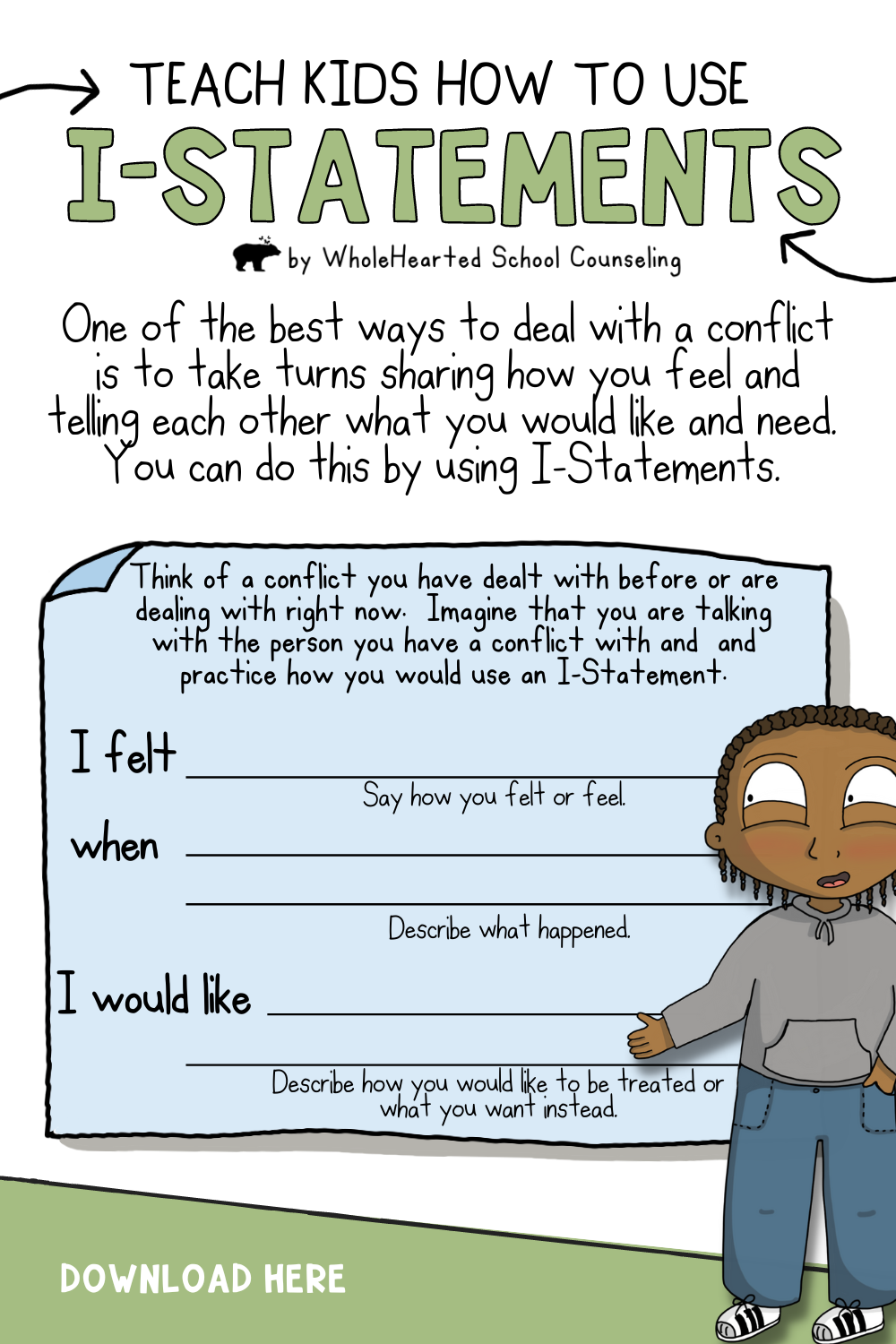
7. Say Words that Mean “No”
Use a strong and respectful voice to say you are not okay with something. Or another way of thinking about this skill that it is the assertive boundary setting declaration. When kids say “no,” they are communicating their limits and expectations in a clear and confident manner. This can also help prevent misunderstandings by setting expectations from the start.
Situations when this conflict resolution skills would work well include when someone is asking them to do something they don’t want to do or when someone is trying to take something from them without permission.
Some “No” Words Are:
- “Stop.”
- “I am not ok with that.”
- “Not now.”
- “Don’t bother.”
- “No thanks.”
- “No.”
8. Take Turns or Share
This is one of those “everything I ever needed to learn I learned in kindergarten” sort or rule. The basics are: share what you both want to use, each person takes a turn, and have fun playing together. You could jazz up examples such as:
- Imagine if you had to eat the entire large pizza by yourself, without sharing with your siblings…You might get a really huge belly ache!
- Taking turns can be like taking a break in a marathon or track meet. It gives everyone a chance to catch your breath and get ready for the next round.
Imagine if you had to play a game of catch alone, without anyone to receive the ball? You’d just be throwing the ball up in the air…..and watching it fall down again, with no one to pass it back to you. How fun would that be?
9. Do Something Else
Doing something else helps kids to shift their focus away from a potential conflict, and instead re-focus their attention towards something positive.
Some examples you could share with kiddos include:
- Say you and your cousin both want to play with the same toy, you could find another toy to play with or even suggest something you could both do together, like build a pillow fort.
- If you are playing a game at recess and don’t like how some of your friends are playing, you could find something else to do, like shoot basketball hoops or climb the jungle gym.
- If you feel like your brothers are leaving you our or excluding you, do something else like taking your dog on a walk or riding your bike.
Doing something else looks like:
Find something else to do.
Be flexible and creative.
Play a different game.
Use something different.
10. Listen to the Other Person
This is a hard one…not just for kids, but for adults too. It can be challenging to pause and really hear what the other person is saying, especially if you feel offended, wronged, or hurt.
When children listen actively, it helps them to:
- acknowledge and validate the other person’s emotions
- better understand the other person’s perspective
- clarify misunderstandings
- work together to find a solution that gets closer in meeting everyone’s needs
11. Put Yourself In the Other Person’s Shoes
One of the most essential conflict resolution skills for kids is empathy. Being able to put yourself in someone else’s shoes helps kids to understand the other person’s perspective, cultivate better communication skills, build positive relationships, and even reduce the chances for hurtful behavior.
12. Apologize
Last but not least, it’s important to teach kids how to apologize. Apologizing is an important conflict resolution skill for kids because it helps them take responsibility for their actions. In addition, it’s a way they can express remorse, and make repairs for any harm they may have caused.
Making a meaningful apology takes practice. There’s a big difference between saying, “I’m sorry you feel sad” versus “I’m sorry that I called you mean name. What I did was hurtful. And I would like to make it up to you.”
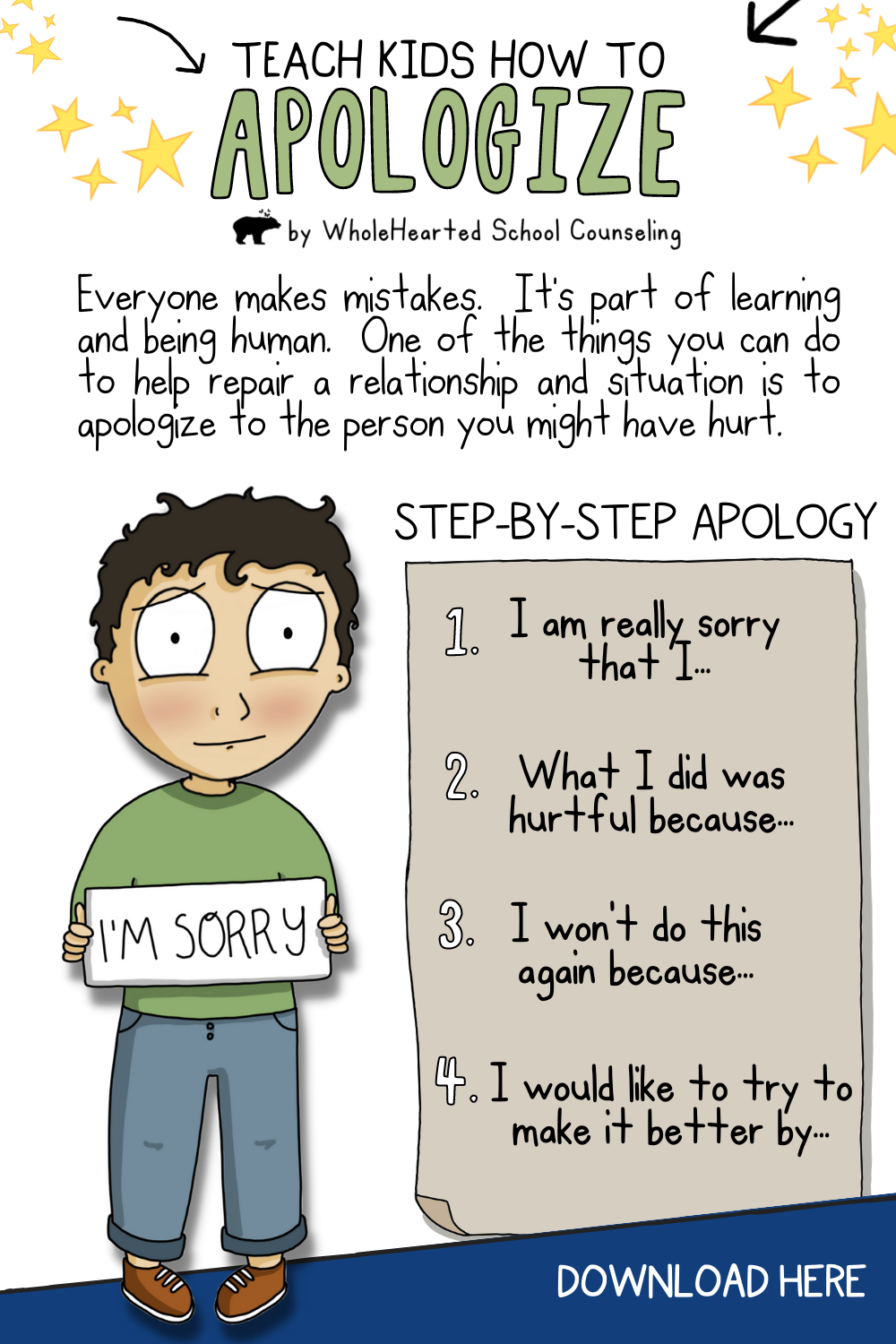
Step By Step Guide to Deal with Conflict for Kids
Recognizing how it take lots of practice to develop problem solving skills, on top of seeing how time consuming it could get for teachers who were constantly mediating conflicts between students, I created a conflict resolution lap book that takes children through each step. It’s interactive, hands-on nature, coupled with strong visual supports, help empower students to become independent problem solvers.
This lap book has kids:
- Choose a coping tool to get calm first. The calming strategies include Hand Over Heart, Cocoa Breathing, Count to 20, Roller Coaster Breathing, Rocks & Socks, and Ocean Waves Breathing, all with strong visual supports and directions.
- Reflect on the size of the problem. If it is a big problem, get an adult to help! But if it’s something you can handle on your own….
- Choose a conflict resolution tool…and give it a try.
- If using an I-Message, kids can use the hands-on template on the back of the lap book to formulate the statement.
- After trying out the conflict resolution strategy, reflect on whether or not it helped. If not, don’t worry – the lap book also includes prompts to suggest trying another skill.
Some of the feedback I have gotten from teachers is that this step-by-step guide has been a game changer in their classrooms. That it has been very helpful for students dealing with conflict since it provides students with essential tools to help them resolve conflicts on their own. Plus, because it is interactive, it helps students regulate their emotions when triggered by frustrating social interactions.
Take a look below! I’d love to hear what you think! And would especially love to hear any tips of tricks you’ve used to teach kids conflict resolution skills, too!!


